- Prehistory-
the early pioneer days (of an era) - Stone tools and earthenware presumed to have been used in the Jomon period and earlier have been found, and it is believed that people lived in Biei about 10,000 years ago. On the other hand, Ainu people only visited Biei for hunting and no settlement (kotan) was found.
- 1857
- Ichitaro Matsuda (a samurai directly under the Tokugawa Shogunate) and Takeshiro Matsuura (a hired historian of the Hakodate Magistrate Office) visit Biei to conduct research.
- 1894
- Naozaburo Kobayashi (from Hyogo), the first settler, moves to Biei with three hired historians. Asahi Farm is established.
- 1899
- The Tokachi Line (now JR Furano Line) opens between Asahikawa and Biei, and Biei Station opens.
- 1900
- Tanaka Farm (now Bida) and Hanzawa Farm (now Hokuei) are established. Biei Village becomes independent from Kagura Village to which it had belonged.
- 1940
- Enactment of town organization. Biei-cho is established.
- 1947
- Agricultural cooperative established.
- 1950
- A hot spring gushes out in Shirokane. Ryokan business begins.
- 1951
- Biei-cho Tourist Association formed.
- 1971
- Landscape photographer Shinzo Maeda visits Biei for the first time.
- 1972
- Ken and Mary’s Tree” appeared in an automobile commercial.
- 1987
- Takushinkan (Shinzo Maeda Photo Gallery) opens.
- 2000
- Biei-cho 100th anniversary of the foundation.
- 2005
- Seven towns and villages including Biei-cho established “The Most Beautiful Village in Japan” Union. Biei Curry Udon, a local gourmet dish using Biei products, is born.
- 2006
- Hillside Kura open Registered as a roadside station in 2007.
- 2007
- Biei Selection opens as a showroom for Biei agricultural products.
- 2012
- Apple Inc. adopts “Blue Pond” as computer wallpaper. Establishment of the Hill Town Viei Revitalization Association.
- 2018
- Roadside Station Viei “Shirogane Birke” opened.
жӯ·еҸІ
With a view of the hills.
History of agriculture and tourism.
1 The origins of the hill towns
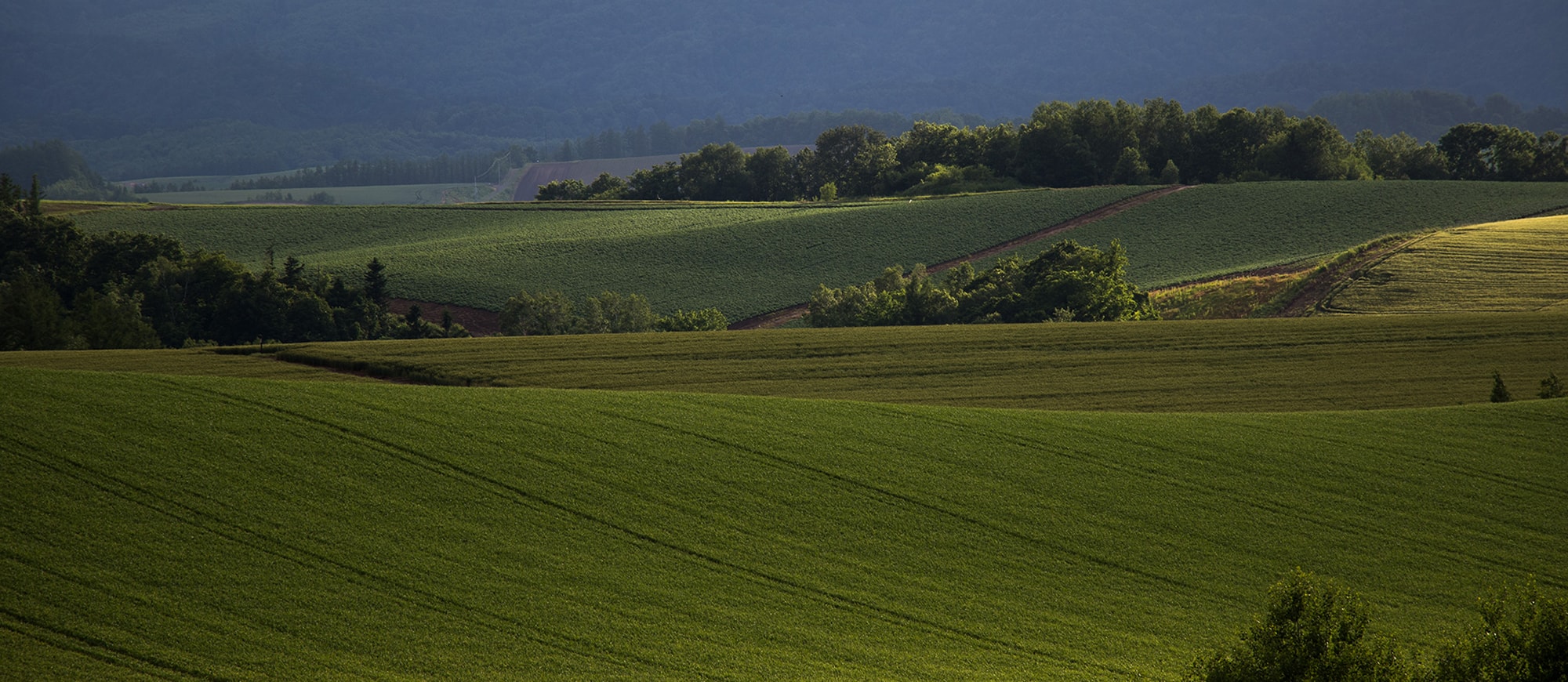
The beautiful hill scenery that attracts many tourists today was formed by volcanic ash and mudslides deposited by large volcanic eruptions in the vicinity of the present-day Tokachi and Taisetsu mountain ranges, which were eroded by numerous rivers over a long period of time, forming the topography of wavy hills. Pioneers carved out the hills, which were once dense mountain forests.
2 History of Agriculture in Biei
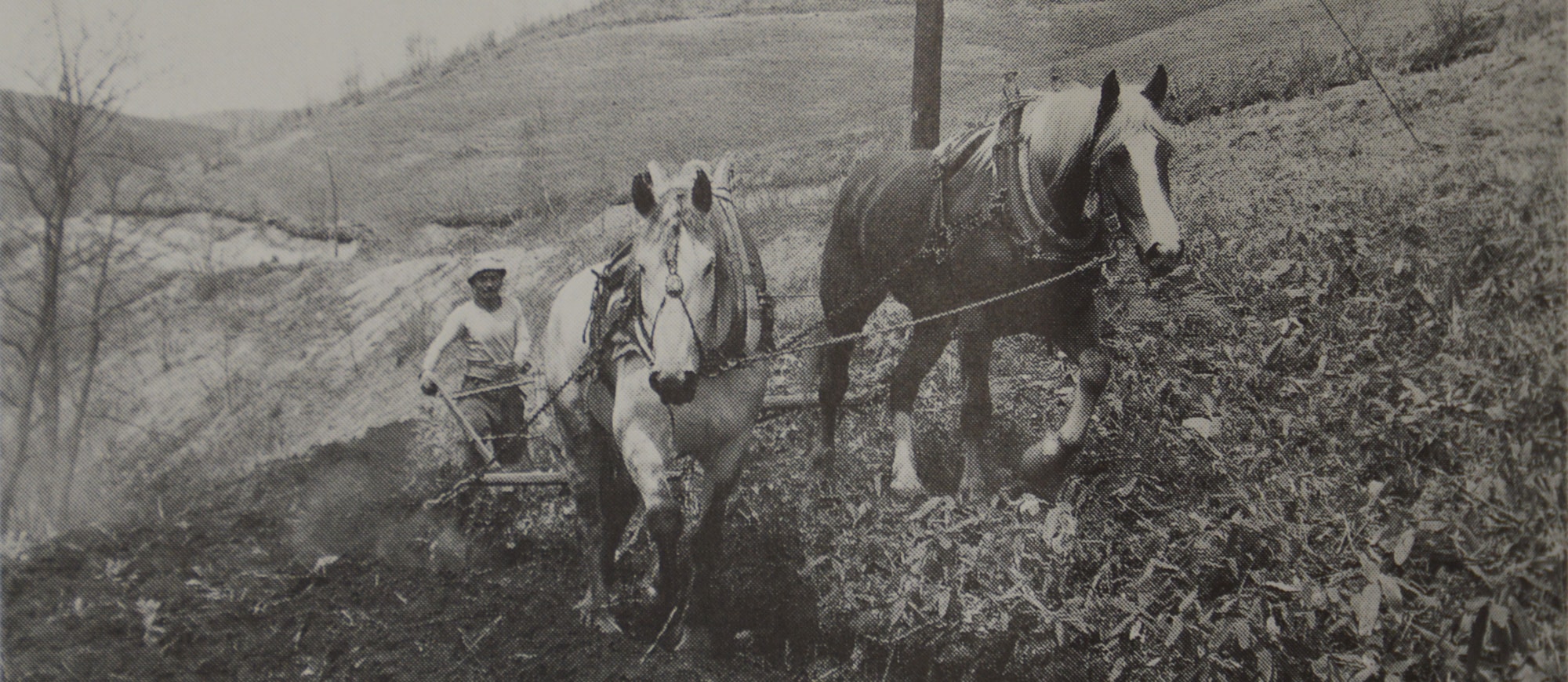
Farming began in the Asahi district. Houses were built near the watering holes, rice paddies were cultivated on the flat riverbanks where water could be drawn, and fields were cultivated on the slopes of the hills. From that time until the 1960s, horses were an essential part of farmers’ lives. Farm work, as well as shopping and transportation, was done by horse-drawn sleigh. In 1983, crop rotation began, with potatoes, beets, beans, wheat, and other crops changing each year as the land was planted. The land was changed every year, so the landscape of the hills also changed every year.
3 History of Sightseeing in Biei
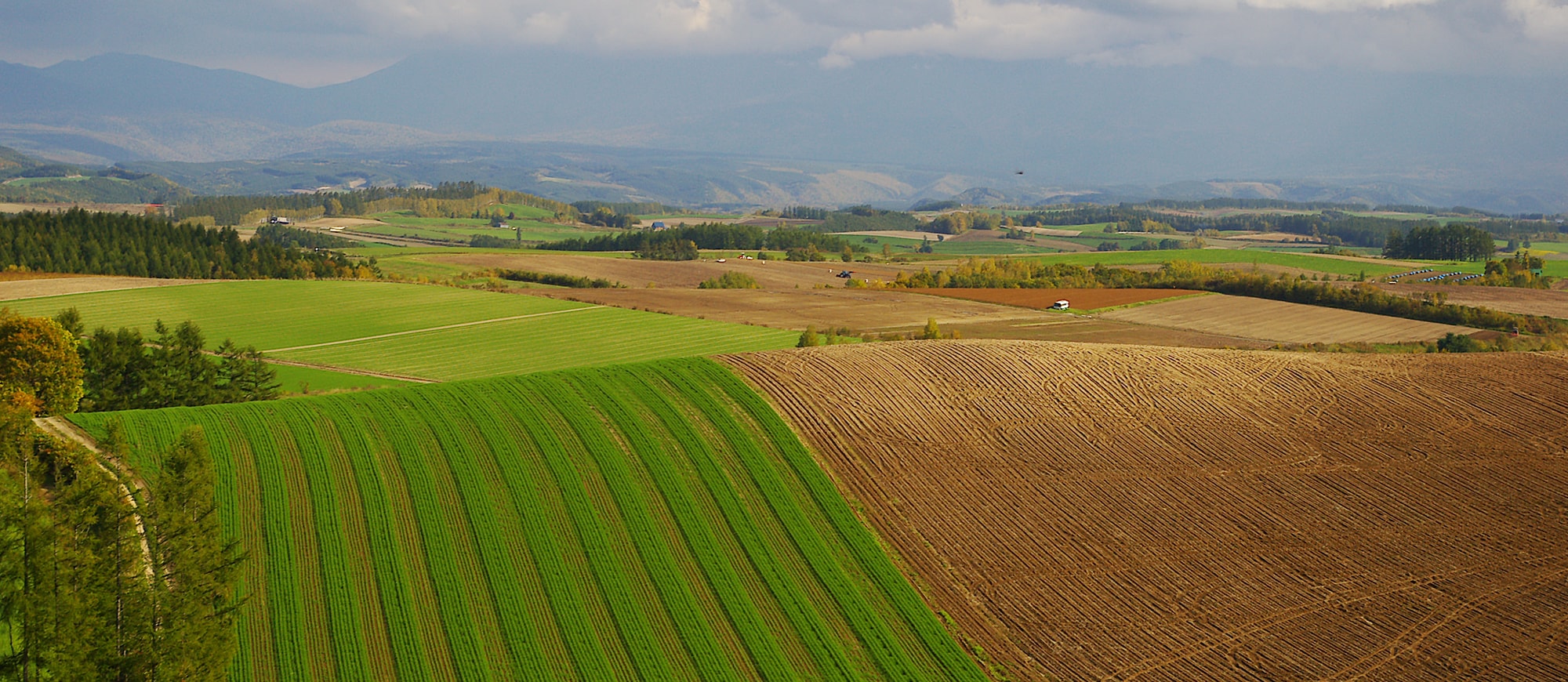
A photographer named Shinzo Maeda
In 1971, the late landscape photographer Shinzo Maeda visited Biei for the first time. The landscape of the hills reminded him of Europe, and he found a new landscape that was different from the Japanese landscape. He left behind many photographs other than his masterpiece “Barley Autumn Brilliant,” and his photographs created the opportunity for Biei to change into a town for tourism. Takushinkan was built as a base for his activities in Hokkaido, and many of his works are still on display there today.
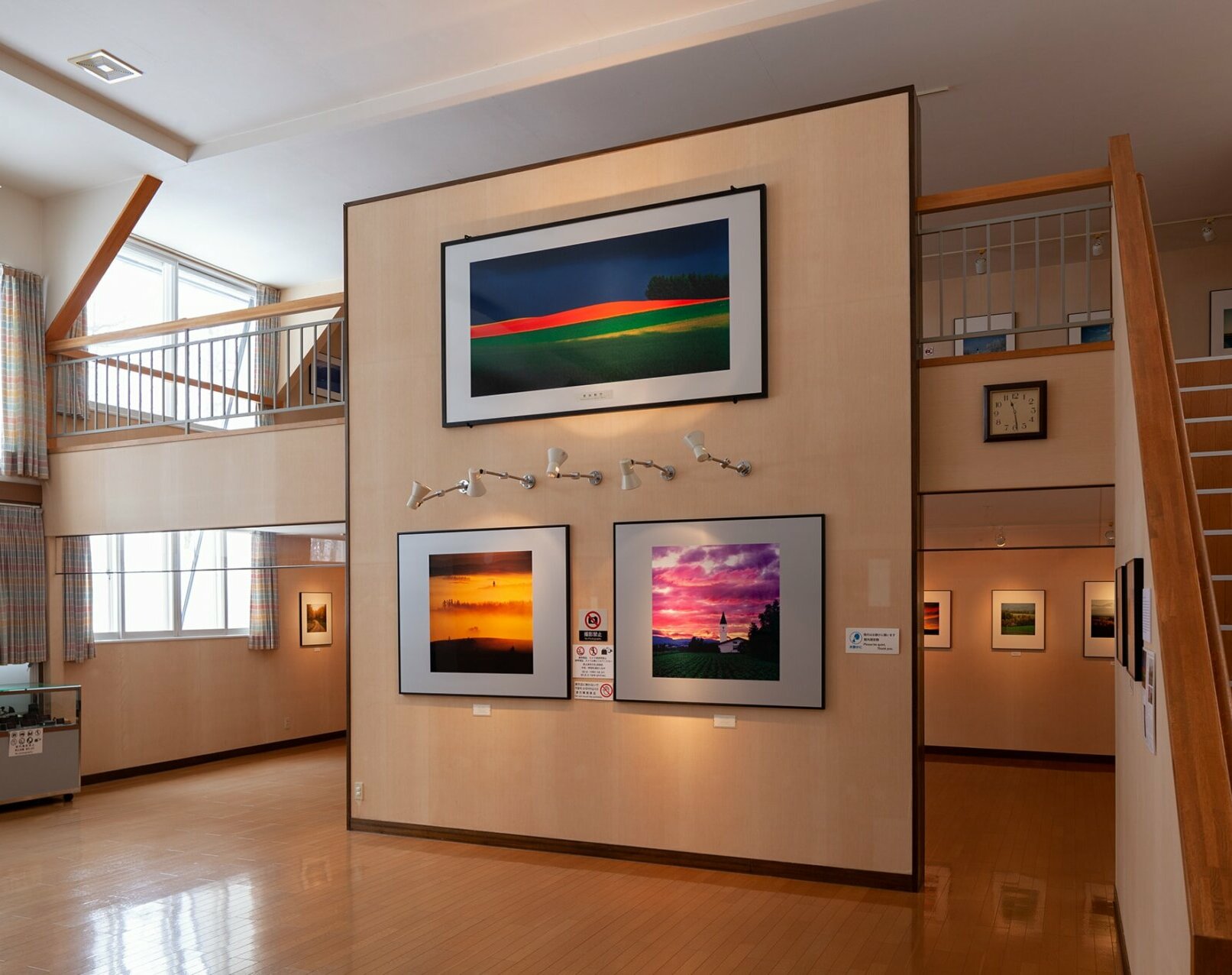
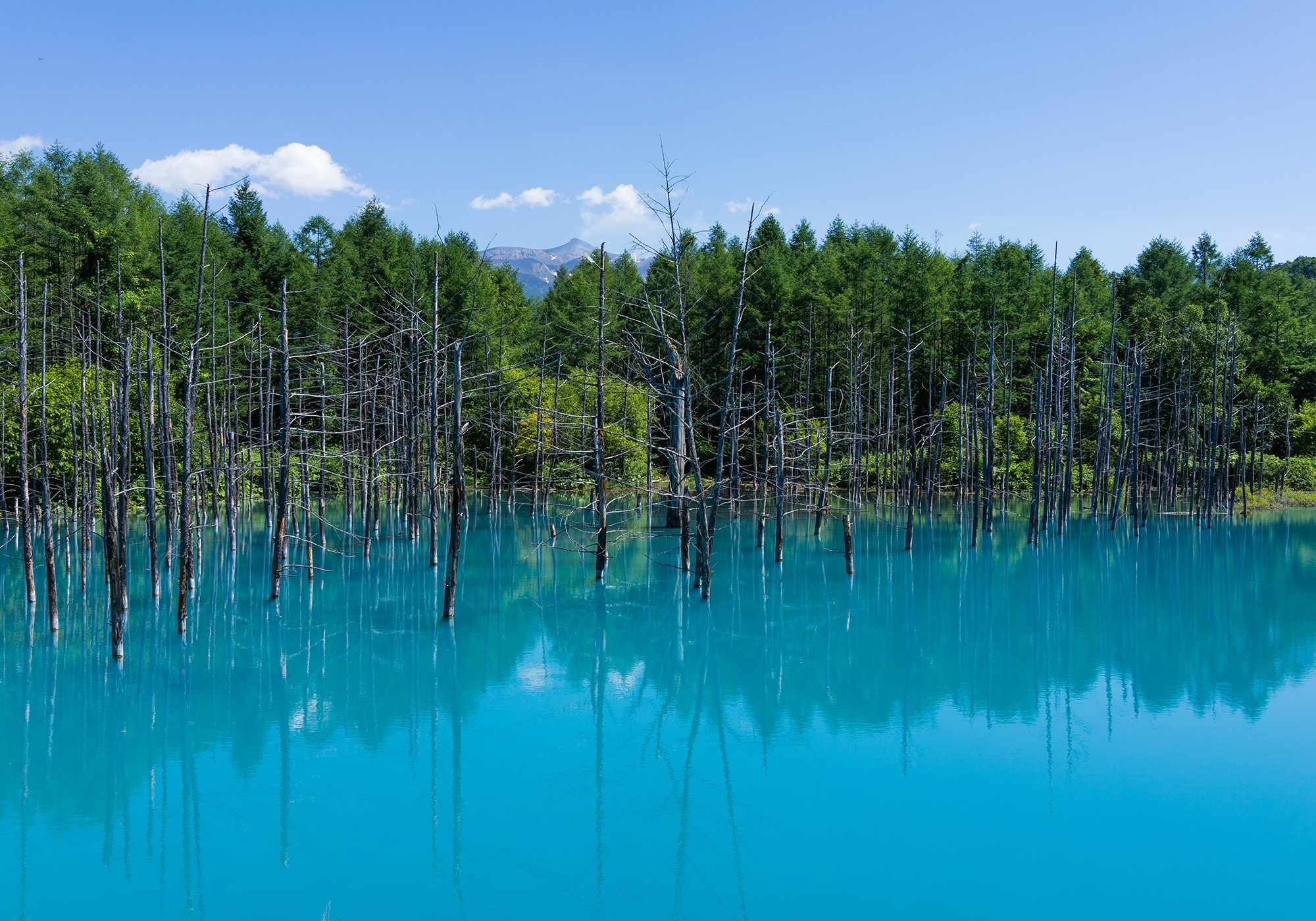
Tourism in recent years, including the Blue Pond
In 2015, the blue pond was used as a mural on an Apple computer.In 2018, a roadside station, Shirogane Birke, opened. Road maintenance and other improvements have been made around the Blue Pond, and the area is also illuminated at night.
4 As a sustainable tourism
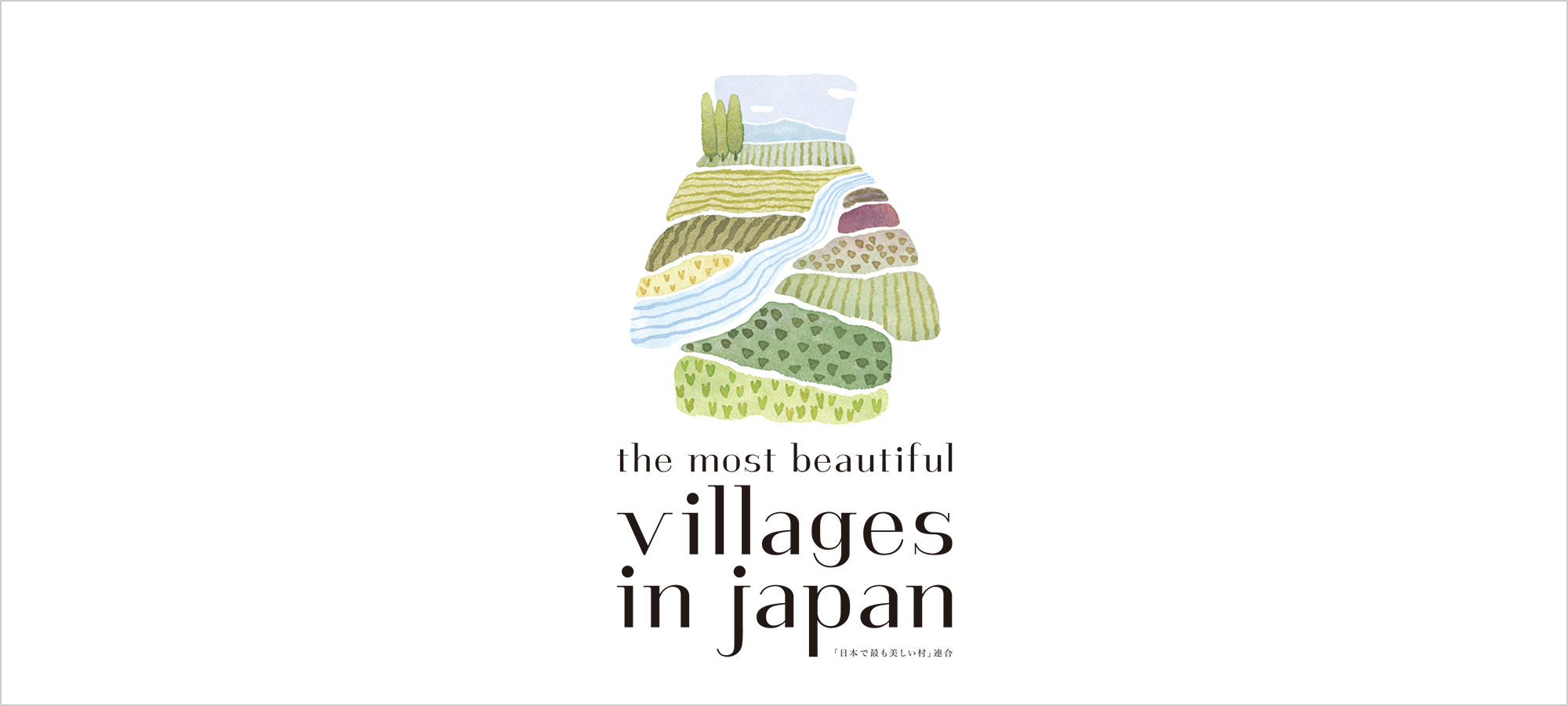

In 2005, it was established with the aim of preserving the beauty of the region for the future, adding value in terms of tourism, protecting local resources, and developing the local economy. In 2022, the “Tokachidake Geopark Concept,” which had been active since 2015, will be officially recognized as a Japan Geopark, and in 2023, it will be recognized as one of the Best Tourism Villages promoted by the World Tourism Organization (UNWTO), the United Nations specialized agency in the field of tourism. In 2023, Biei-cho was recognized as one of the Best Tourism Villages promoted by the World Tourism Organization (UNWTO). As a model of sustainable tourism, Biei-cho is developing its tourism industry while maintaining the beauty of the region.


